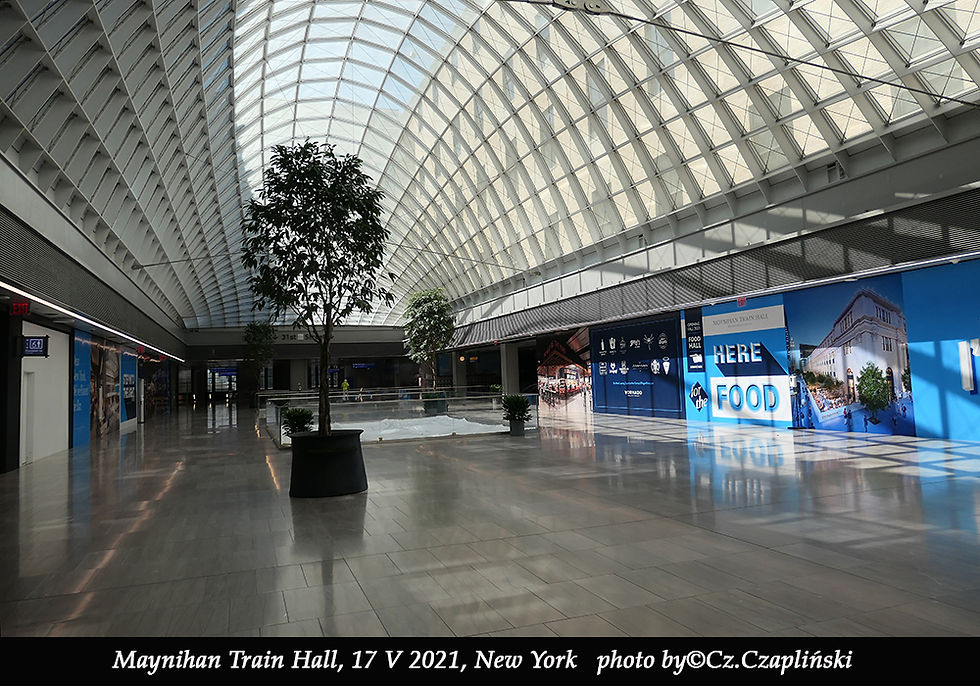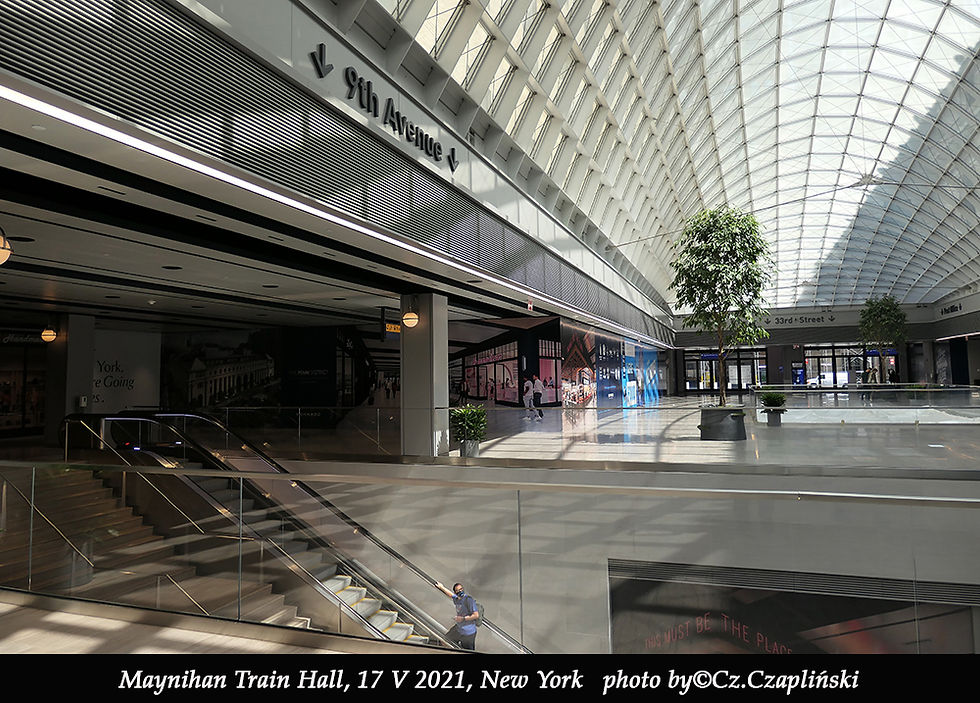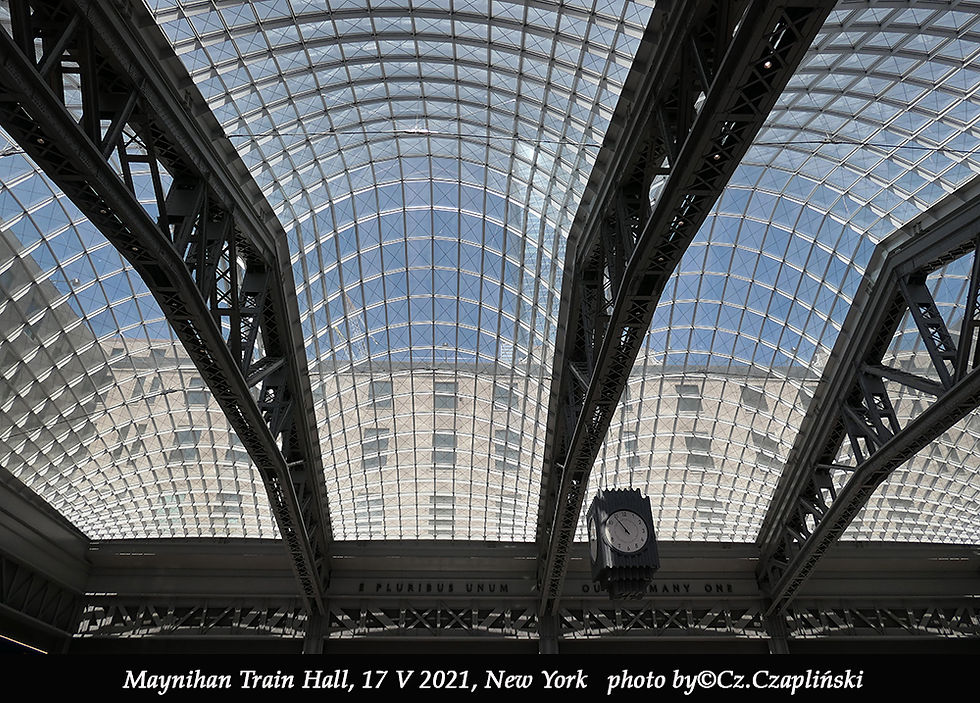PORTRET z HISTORIĄ Daniel Patrick Moynihan
- Czesław Czapliński

- 18 maj 2021
- 7 minut(y) czytania
Zaktualizowano: 12 mar 2024

„…Każdy ma prawo do własnej opinii, ale nie do własnych faktów…” – Daniel Patrick Moynihan.
(ur. 16 marca 1927 r. w Tulsie w stanie Oklahoma/USA; zm. 26 marca 2003 r. w Waszyngtonie) – profesor i senator Stanów Zjednoczonych.
Przez ponad 40 lat w rządzie, często krytykował administrację prezydencką, co ciekawe obu partii. Jego kampania mająca na celu przekształcenie słynnej Pennsylvania Avenue w Waszyngtonie w trwały pomnik odnowiła miasto i pozostaje do dziś jako spuścizna jego zainteresowania architekturą.
Moynihan urodził się w Tulsie jako syn dziennikarza. W tym samym roku jego ojciec przeniósł się z rodziną do Nowego Jorku. W 1937 roku, gdy Moynihan miał dziesięć lat, jego ojciec porzucił rodzinę, pozostawiając ją w biedzie. Często zmieniali mieszkania na Manhattanie, a Moynihan pomógł utrzymać rodzinę, czyszcząc buty na Times Square. Moynihan ukończył liceum z wyróżnieniem w 1943 roku, a następnie pracował jako portowiec w Piers 48 i 49 na Manhattanie.
Po rocznym uczęszczaniu do City College na Manhattanie, Moynihan wstąpił do marynarki wojennej i przeszedł szkolenie oficerskie w Middlebury College i Tufts University. W następnym roku, po zakończeniu II wojny światowej, został zwolniony ze służby, pracował w barze, który kupiła jego matka, a następnie uzyskał tytuł licencjata w Tufts w 1948 r. W 1949 r. uzyskał tytuł magistra w Fletcher School of Law and Diplomacy at Tufts. W 1950 roku otrzymał stypendium Fulbrighta na naukę w London School of Economics. Po powrocie do Stanów Zjednoczonych w 1953 r. pracował nad kampanią burmistrza Roberta F. Wagnera, a następnie napisał przemówienia dla udanej kampanii gubernatorskiej W. Averella Harrimana w 1954 r. Został głównym współpracownikiem Harrimana, kiedy ten objął urząd. Pracując tam poznał Elizabeth Brennan i pobrali się w maju 1955 roku. W 1961 roku, po uzyskaniu doktoratu. w stosunkach międzynarodowych na Uniwersytecie Syracuse, rozpoczął pracę na Wydziale Pracy w Waszyngtonie, gdzie ostatecznie został asystentem sekretarza wydziału. Tam zainteresował się architekturą przestrzeni biurowych, a następnie architekturą budynków i przestrzeni publicznych. Zainteresowanie to przetrwa do końca jego życia i zapoczątkuje jeden z jego najtrwalszych projektów: przekształcenie obskurnej Pennsylvania Avenue w Waszyngtonie w wielki bulwar łączący Kapitol Stanów Zjednoczonych i Biały Dom.
W 1966 przeniósł się na Harvard University, gdzie pełnił funkcję dyrektora Joint Center for Urban Studies i został profesorem etatowym w Graduate School of Education.
Kiedy republikanin Richard M. Nixon został wybrany na prezydenta, Moynihan, który uważał się za liberalnego demokratę, dołączył do personelu Białego Domu jako asystent prezydenta do spraw miejskich. Jego przyjaciele i żona byli zaskoczeni jego sojuszem z Nixonem, a jego żona odmówiła przeprowadzki do Waszyngtonu. Pracując z Nixonem, Moynihan naciskał na Plan Pomocy Rodzinie dla biednych rodzin oraz sugerował by Stany Zjednoczone zakończyły wojnę w Wietnamie.
W 1970 roku wrócił na Harvard, gdzie przeniósł swoje zainteresowania na sprawy zagraniczne; odegrał kluczową rolę w negocjowaniu zakończenia ogromnego długu Indii w postaci pomocy żywnościowej wobec Stanów Zjednoczonych. W 1975 roku został ambasadorem Stanów Zjednoczonych w ONZ.
Moynihan przeszedł na emeryturę w lutym 1976 roku. Następnie kandydował do Senatu o nominację Demokratów, wygrał z łatwością i ponownie wygrał jeszcze trzy razy. Jako senator pracował nad uzupełnieniem niedoboru pieniędzy federalnych w Nowym Jorku. Był również znany z krytyki wszystkich czterech prezydentów, pod którymi służył.
W 2000 roku prezydent Clinton przyznał Moynihanowi Medal Wolności, najwyższe odznaczenie cywilne Stanów Zjednoczonych. Daniel Patrick Moynihan w latach (1977-2001) był Senatorem z ramienia Partii Demokratycznej.
Moynihan zmarł 26 marca 2003 r. W wyniku komplikacji spowodowanych pęknięciem wyrostka robaczkowego; miał 76 lat. Pozostawił żonę Elżbietę i ich dzieci, Timothy, Maura i John; i dwoje wnuków. Został pochowany na Cmentarzu Narodowym w Arlington z pełnymi honorami wojskowymi, w tym salutem z 21 pistoletów i muzycznym hołdem wykonanym przez Navy Band.

Pierwszy raz spotkałem i fotografowałem Daniela Patricka Moynihana 27 października 1986 r., kiedy otrzymał na Ellis Island Medal of Honor.
Ale muszę powiedzieć, że już po jego śmierci w 2003 r., nie myślałem, że spotkamy się ponownie w Nowym Jorku 17 maja 2021 r. Niedawno otwarte Moynihan Train Hall, na jego cześć, znajduje się naprzeciwko New York Penn Station przy 8th Avenue w zabytkowym budynku poczty James A. Farley na Manhattanie w Nowym Jorku. Główna sala nosi imię senatora Daniela Patricka Moynihana, który pierwotnie był orędownikiem tego planu. Budynek z zewnątrz przypomina oryginalną Penn Station; oba budynki zaprojektował ten sam architekt, McKim, Mead & White, w stylu Beaux-Arts.
Kompleks o powierzchni 45 200 m2, pochłonął 1,6 miliarda dolarów. Projekt był rozważany od wczesnych lat 90-tych, a pierwsze plany zostały upublicznione w 1993 roku. Jednak kilka wcześniejszych planów nie powiodło się z powodu braku funduszy i trudności logistycznych. Hala pociągów dla najbardziej ruchliwego dworca kolejowego na półkuli zachodniej została otwarta 1 stycznia 2021 roku.
„…Nikt nie jest niewinny po doświadczeniu rządzenia. Ale nie wszyscy są winni…” – Daniel Patrick Moynihan (reagując na zabójstwo Johna F. Kennedy'ego, listopad 1963).
PORTRAIT with HISTORY Daniel Patrick Moynihan

"... Everyone is entitled to his own opinion, but not his own facts ..." - Daniel Patrick Moynihan.
Daniel Patrick Moynihan (born March 16, 1927 in Tulsa, Oklahoma / USA; died March 26, 2003 in Washington) - professor and senator of the United States.
For over 40 years in government, he often criticized the presidential administration, which is interesting for both parties. His campaign to transform Washington's famous Pennsylvania Avenue into a lasting monument restored the city and remains to this day as a legacy of his interest in architecture.
Moynihan was born in Tulsa as the son of a journalist. In the same year, his father moved with his family to New York. In 1937, when Moynihan was ten, his father abandoned his family, leaving them poor. They changed apartments in Manhattan frequently, and Moynihan helped support the family by cleaning the shoes in Times Square. Moynihan graduated from high school with honors in 1943 and then worked as a dock ship at Piers 48 and 49 in Manhattan.
After attending City College in Manhattan for one year, Moynihan joined the Navy and received officer training at Middlebury College and Tufts University. The following year, after the end of World War II, he was discharged from service, worked at a bar his mother bought, and then obtained his bachelor's degree from Tufts in 1948. In 1949, he obtained his master's degree from the Fletcher School of Law and Diplomacy at Tufts. In 1950, he received a Fulbright scholarship to study at the London School of Economics. Returning to the United States in 1953, he worked on Mayor Robert F. Wagner's campaign, then wrote speeches for W. Averell Harriman's successful governance campaign in 1954. He became Harriman's chief associate when he took office. While working there, he met Elizabeth Brennan and they got married in May 1955. In 1961, after receiving his doctorate. in international relations at Syracuse University, he began working at the Department of Labor in Washington, where he eventually became assistant secretary of the department. There he became interested in the architecture of office spaces, and then the architecture of buildings and public spaces. This interest will last for the rest of his life and kick off one of his most enduring projects: transforming dingy Pennsylvania Avenue in Washington into a grand boulevard connecting the US Capitol and the White House.
In 1966, he moved to Harvard University, where he served as director of the Joint Center for Urban Studies and became a full-time professor at the Graduate School of Education.
When Republican Richard M. Nixon was elected president, Moynihan, who saw himself as a Liberal Democrat, joined the White House staff as assistant to the president on municipal affairs. His friends and wife were surprised by his alliance with Nixon, and his wife refused to move to Washington. Working with Nixon, Moynihan pushed for a Family Assistance Plan for Poor Families and suggested that the United States end the Vietnam War.
In 1970, he returned to Harvard, where he shifted his interests to foreign affairs; played a key role in negotiating an end to India's massive debt of food aid to the United States. In 1975, he became the US ambassador to the United Nations.
Moynihan retired in February 1976. He then ran for the Senate to nominate Democrats, won easily, and won again three more times. As a senator, he worked to fill the federal shortfall in New York. He was also known for criticizing all four presidents under whom he served.
In 2000, President Clinton awarded Moynihan with the Medal of Freedom, the United States' highest civilian decoration. Daniel Patrick Moynihan in the years (1977-2001) was a Senator for the Democratic Party.
Moynihan died March 26, 2003 from complications from a ruptured appendix; he was 76 years old. He left a wife, Elizabeth, and their children, Timothy, Maura, and John; and two grandchildren. He was buried at Arlington National Cemetery with full military honors, including a 21 pistol salute and a musical tribute by the Navy Band.
I first met and photographed Daniel Patrick Moynihan on October 27, 1986, when he was awarded the Medal of Honor on Ellis Island.
But I must say that after his death in 2003, I did not think we would meet again in New York on May 17, 2021. The recently opened Moynihan Train Hall, in his honor, is located across from New York Penn Station on 8th Avenue in the historic James A. Farley post office building in Manhattan, New York City. The main hall is named after Senator Daniel Patrick Moynihan, who originally championed this plan. From the outside, the building resembles the original Penn Station; both buildings were designed by the same architect, McKim, Mead & White, in the Beaux-Arts style.
The 45,200 m2 complex cost $ 1.6 billion. The project has been under consideration since the early 1990s, and the first plans were made public in 1993. However, several prior plans failed due to lack of funding and logistical difficulties. The train hall for the busiest train station in the Western Hemisphere opened on January 1, 2021.
“… No one is innocent after the experience of governing. But not everyone is guilty ... ”- Daniel Patrick Moynihan (in response to the murder of John F. Kennedy, November 1963).














Komentarze